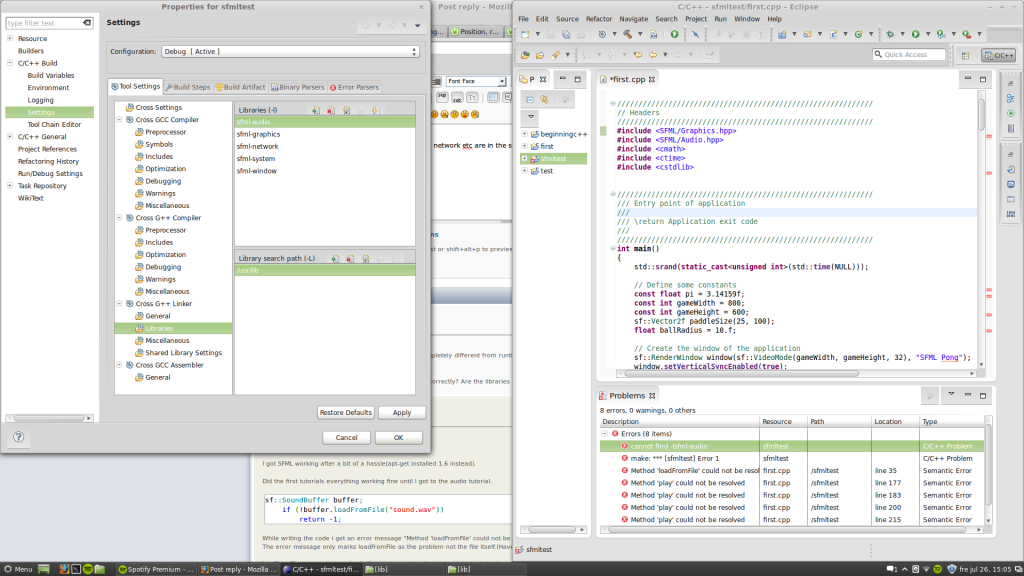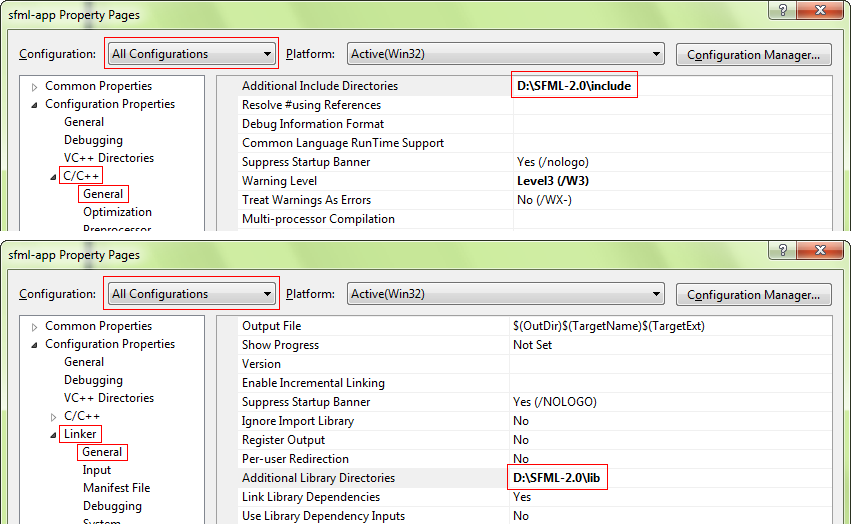How To Set Up Sfml In Dev C%2b%2b
- How To Set Up Sfml In Dev C 2b 2b 1
- How To Set Up Sfml In Dev C 2b 2b Download
- How To Set Up Sfml In Dev C 2b 2b 1b
- How To Set Up Sfml In Dev C 2b 2b Answer
This tutorial is the first one you should read if you're using SFML on Linux. It will explain how to install SFML, and compile projects that use it.
In case you installed SFML to a non-standard path, you'll need to tell the compiler where to find the SFML headers (.hpp files): g -c main.cpp -I /include Here, sfml-install-path is the directory where you copied SFML, for example /home/me/sfml.
There are different approaches to the installation of SFML on Linux:
If CMake can’t find ImGui-SFML on your system (or you didn’t install it), just define ImGui-SFMLDIR before calling findpackage. Manual integration. This is slightly more complex Use SFML to get a simple window to show up. Follow the “Getting started” tutorial here if you have never done it before. Just like the question says how can I create 3D games with SFML and OpenGl and set it up with Visual Studio. Last edited on Apr 21, 2020 at 2:57am UTC Apr 21, 2020 at 3:09am UTC. In the first lesson we will set up an SFML project. The next section will add in the Box2D library (which is a little harder to do than SFML). This tutorial uses Visual Studio 2015. However, SFML has a good tutorial on their site if your using another IDE. SFML Game Development By Example: Create and develop exciting games from start to finish using SFML Raimondas Pupius Simple and Fast Multimedia Library (SFML) is a simple interface comprising five modules, namely, the audio, graphics, network, system, and window modules, which help to develop cross-platform media applications. SFML Project Template A template SFML project using the NuGet SFML packages. One click setup from the 'New Project' page straight into a working project, with all libraries included and set up. Saves a lot of time when starting a project. C toolset, ATL, or MFC. Workloads Individual components Web & Cloud (4) ASP.NET and web development Build web applications using ASP.NET, ASP.NET Core, HTML/JavaScript, and Containers including Docker support. Python development Editing, debugging, interactive development and source control for Python. Windows (3).NET desktop development.
- Install it directly from your distribution's package repository
- Get the source code, build it and install it
- Download the precompiled SDK and manually copy the files
How To Set Up Sfml In Dev C 2b 2b 1
Option 1 is the preferred one; if the version of SFML that you want to install is available in the official repository, then install it using your package manager. download monogram fonts for mac For example, on Debian you would do:
Option 2 requires more work: you need to ensure all of SFML's dependencies including their development headers are available, make sure CMake is installed, and manually execute some commands. This will result in a package which is tailored to your system.
If you want to go this way, there's a dedicated tutorial on building SFML yourself.
Finally, option 3 is a good choice for quick installation if SFML is not available as an official package. Download the SDK from the download page, unpack it and copy the files to your preferred location: either a separate path in your personal folder (like /home/me/sfml), or a standard path (like /usr/local).
If you already had an older version of SFML installed, make sure that it won't conflict with the new version!
In this tutorial we're not going to talk about IDEs such as Code::Blocks or Eclipse. We'll focus on the commands required to compile and link an SFML executable. Writing a complete makefile or configuring a project in an IDE is beyond the scope of this tutorial -- there are better dedicated tutorials for this.
If you're using Code::Blocks, you may refer to the Code::Blocks tutorial for Windows; many things should be similar. You won't have to set the compiler and linker search paths if you installed SFML to one of your system's standard paths.
First, create a source file. For this tutorial we'll name it 'main.cpp'. Put the following code inside the main.cpp file:
How To Set Up Sfml In Dev C 2b 2b Download
Now let's compile it:
In case you installed SFML to a non-standard path, you'll need to tell the compiler where to find the SFML headers (.hpp files):

Here, <sfml-install-path> is the directory where you copied SFML, for example /home/me/sfml.
You must then link the compiled file to the SFML libraries in order to get the final executable. SFML is made of 5 modules (system, window, graphics, network and audio), and there's one library for each of them.
To link an SFML library, you must add '-lsfml-xxx' to your command line, for example '-lsfml-graphics' for the graphics module (the 'lib' prefix and the '.so' extension of the library file name must be omitted).
If you installed SFML to a non-standard path, you'll need to tell the linker where to find the SFML libraries (.so files): Dota map 6.86 ai.
How To Set Up Sfml In Dev C 2b 2b 1b

We are now ready to execute the compiled program:
How To Set Up Sfml In Dev C 2b 2b Answer
If SFML is not installed in a standard path, you need to tell the dynamic linker where to find the SFML libraries first by specifying LD_LIBRARY_PATH:
If everything works, you should see this in a new window: